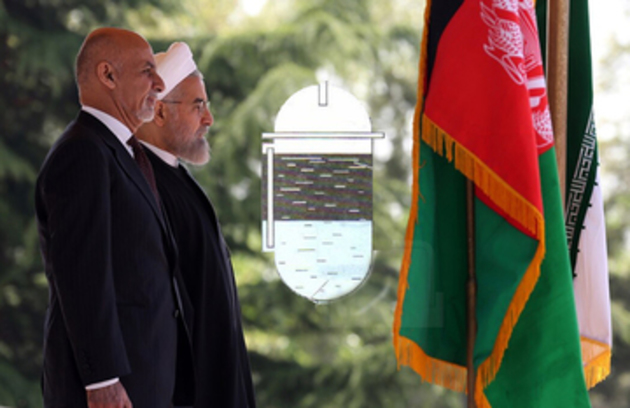Afghan President Ashraf Ghani said Wednesday that his country is committed to give Iran its due share of water under a decades-long bilateral treaty but he stressed that Tehran will have to pay for any additional requirements, Voice of America reports. “We will honor our commitments. However, anything beyond the stipulated quota would require discussions,” Ghani said in a televised speech after inaugurating the newly built Kamal Khan Dam in southwestern Nimroz border province.
“If you give us oil you can then ask for (more) water, or give us something in return,” Ghani said. He insisted that from now on, Afghanistan “will not give free water to anyone.”
There was no immediate comment from Tehran to the assertions made by the Afghan leader. Iran, a lower riparian country, has long objected to the structure of the Kamal Khal Dam, arguing it would severely restrict water flow from the Helmand River into the Iranian border province of Sistan-Baluchistan and will destabilize it..
Afghan officials reject Iranian assessments and describe the project as mutually beneficial. They maintain the dam will help their country manage the water flow and ensure Iran receives its rightful share.
Kabul and Tehran signed an agreement in 1973 that requires Afghanistan to annually release 850 million cubic meters of water to Iran from the nearly 1,300-kilometer-long transboundary Helmand River basin.
However, the treaty was neither ratified nor implemented due to decades of political turmoil and war in Afghanistan, leaving the country’s irrigation and hydropower infrastructure in shambles.
The new dam, constructed at an estimated cost of $110 million, is located in the Chahar Borjak district of Nimroz on the Iranian border.
The construction of the dam started about five decades ago but the outbreak of the Afghan factional conflict in the mid 1970s and subsequent military invasion of the country by the then Soviet Union halted the project until 2011, when it took off again.
Afghan officials said Wednesday the dam, with a capacity to store 52 million cubic meters water, will irrigate 174,000 hectares of agricultural land and generate about nine megawatts of electricity.
Iranian officials are reported to be complaining that Afghanistan’s damming of rivers has reduced water flow to their country.
Afghan officials allege that Iran has developed close ties with the Taliban insurgency to pressure Kabul to stop construction of the dam.
Afghan state television, in a report aired Wednesday, claimed that during the construction period Taliban attacks had “killed and injured” 35 people, including security guards and experts associated with the project.
The insurgent group denies the charges, and Tehran maintains its ties with the Taliban are meant to encourage Afghan warring sides to negotiate a political settlement to the country’s long conflict.
Disputes over water between Iran and Afghanistan date to the 1870s when Afghanistan was under British control, according to a recent report by the Washington-based Atlantic Council’s South Asia Center. It said a British officer drew the Iran-Afghan border along the main branch of the Helmand River.
In 1939, the Iranian government of Reza Shah Pahlavi and Mohammad Zahir Shah’s Afghanistan government signed a treaty on sharing the river’s waters, but the Afghans failed to ratify it, the report noted.






